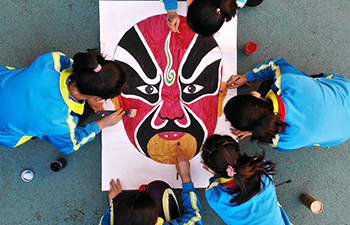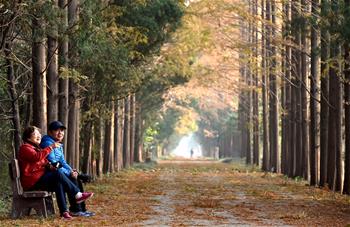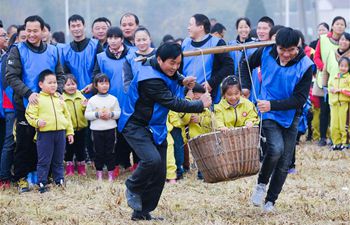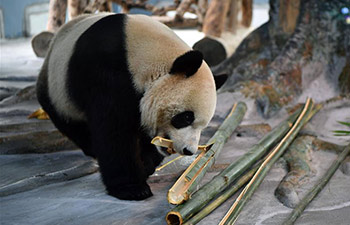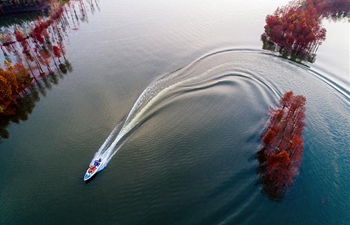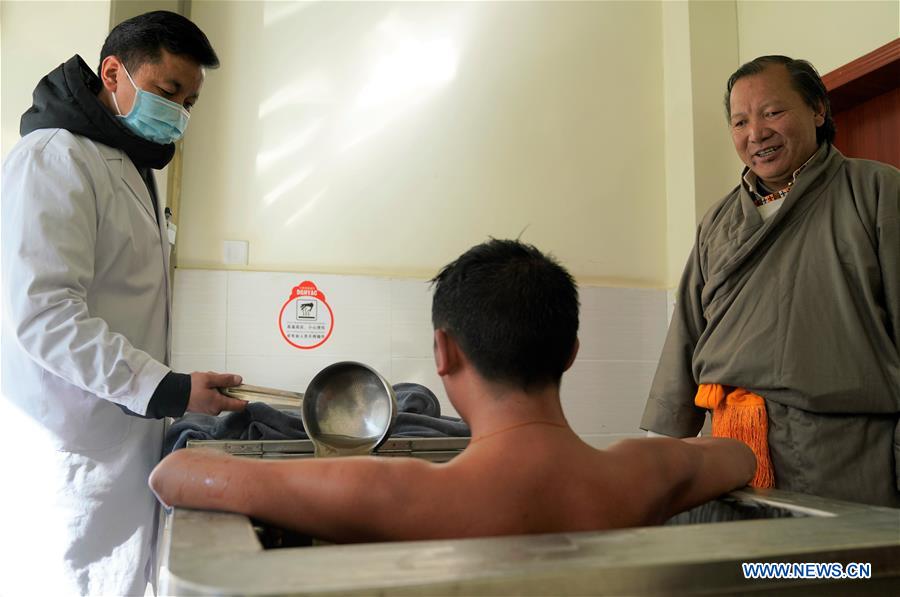
Migdrol (1st R), a national-level intangible cultural heritage inheritor of Sowa Rigpa, inquires on a patient receiving Lum medicinal bathing of Sowa Rigpa at a Tibetan medicine hospital in Shannan, southwest China's Tibet Autonomous Region, Nov. 23, 2018. The United Nations Educational, Scientific and Cultural Organization (UNESCO) inscribed on Wednesday China's Lum medicinal bathing of Sowa Rigpa on the Representative List of the Intangible Cultural Heritage of Humanity, at a convention held in Port Louis, capital of the Republic of Mauritius. The Lum medicinal bathing of Sowa Rigpa is knowledge and practices concerning life, health and illness prevention and treatment among the Tibetan people in China. In Tibetan, "Lum" indicates the traditional knowledge and practices of bathing in natural hot springs, herbal water or steam to adjust the balance of mind and body, to ensure health and treat illnesses. Sowa Rigpa, the Tibetan name of the medicinal practice, literally meaning the knowledge of recuperating, was originated on the Qinghai-Tibet Plateau with an average altitude of 4,000 meters above the sea level. The traditional Tibetan medicine prescriptions of treating illness with herbs and minerals date back 2,500 years. (Xinhua/Purbu Zhaxi)




